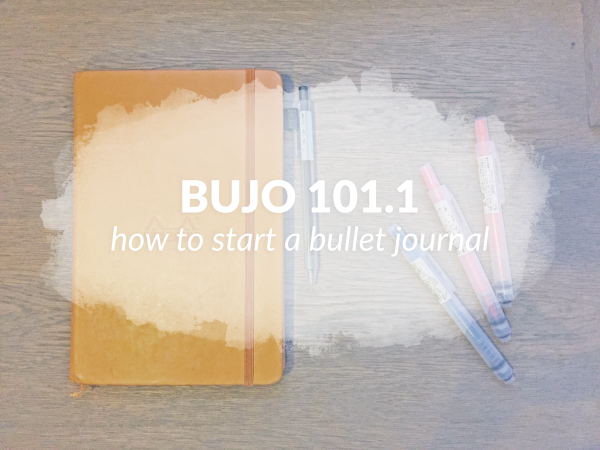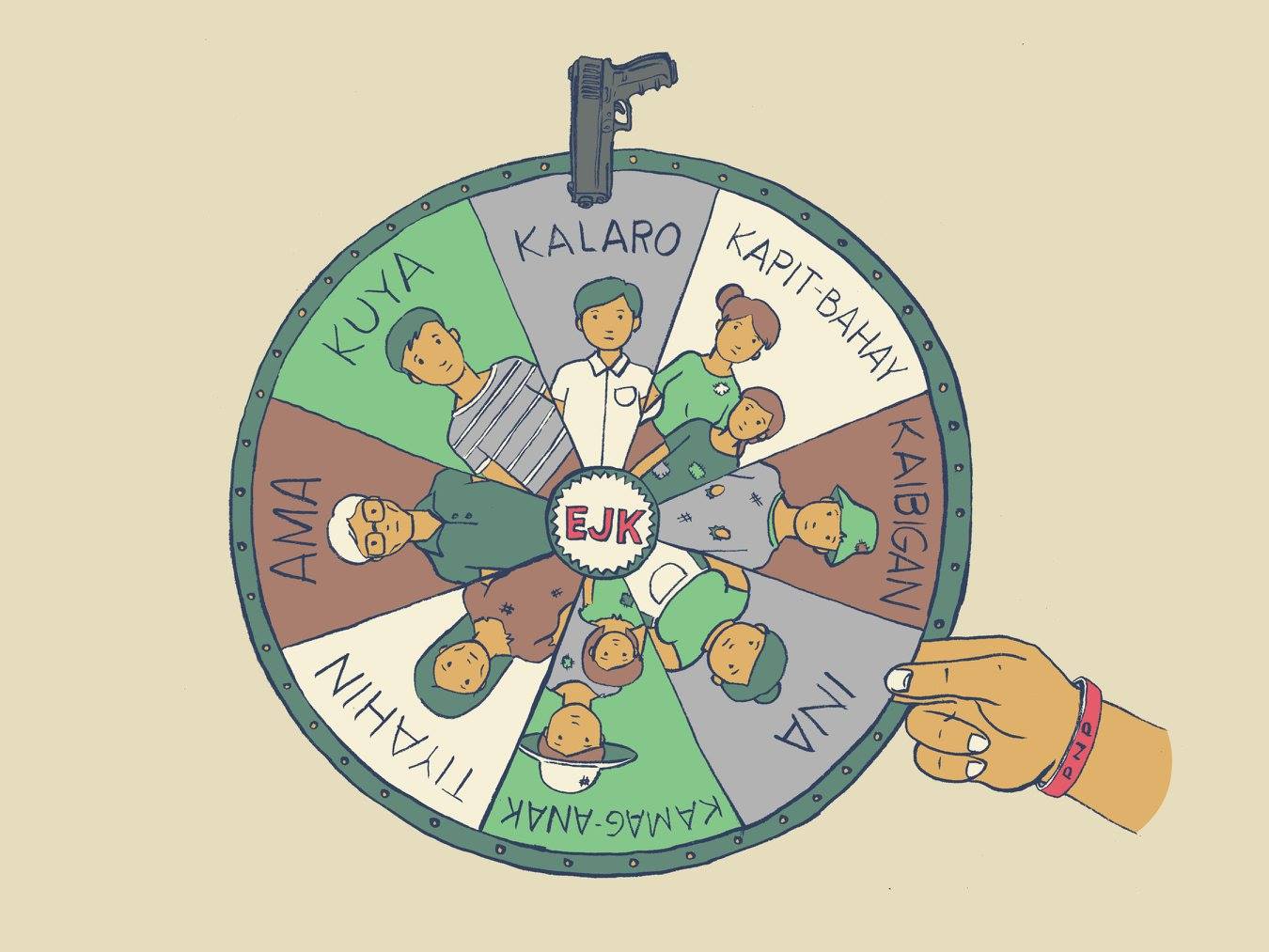[Bullet journals, or BuJos for short, have been pretty popular as of late and now that the new year has rung in and people are clamouring for a sense of organization again, we asked former Scout intern and BuJo kween Belle to share us how to start one’s own BuJo. When I asked her on what the hype is all about, her answer was “It’s better than a planner because you can customize the layout rather than having it set for you. Like it’s a mix of a planner, a to do list, and a diary. Versatility and customization is ?. And if you’re lazy to make the layouts yourself you can also download printables you can stick into the journal so it’s perfect for people who are lazy like me.” So there you have it. Lazy people come on down. – Ed.]
by Belle Mapa
A lot of people have asked me how to go about bullet journaling. Maybe it’s the Virgo in me talking, but I just get so excited to share this method with anyone willing to listen. Now instead of spamming people’s private message boxes with a flurry of links and references, I’ll be consolidating my own post in this 3-part Bullet Journal Crash Course.
Disclaimer: I’m no BuJo expert. I started only several months ago. I’m still trying to find a system that works for me on both an aesthetic and operational level. But anyway, this is for you guys who want to figure out this system too. Hope you enjoy this series of posts, and that they make sense.
Let’s get started!
The basics
The principle behind setting up your bullet journal is finding a system that works for you. It’s highly customizable, adaptable, and super easy. A bullet journal is a planner, a diary, a to-do list, and a tracker all in one. It shows you what to prioritize, to anticipate, and to set aside.
You will have to set the following up:
Bullet key (optional): a list of your bullets for reference
Index: a table of contents of sorts
Future log: a layout of the year or 6 months at a glance for long-term tasks/events
Collections: important spreads or pages*
Monthly log: a calendar, monthly version of the future log, stuff you need to do this month or forgot to do last month
Daily/weekly log: tasks or events for the day/week
*A page = a collection; here I’m just generally referring to trackers, lists, spaces…
What you need:
A notebook
A pen
Motivation!
That’s literally all you need. Some people like graph paper, others like dotted, lined, or even plain paper. It’s really up to you.
You may want to color code your bullet journals. You can use highlighters or colored pens or markers. Get creative.
Notebook recommendations (will update as I go):
Leuchtturm 1917 (Online: Amazon; PH stores: National Bookstore, Powerbooks)
Moleskine (Online: Amazon, Zalora; PH Stores: National Bookstore, Fully Booked, Powerbooks)
Rhodia—what I’m using! (Online: Amazon; PH Stores: National Bookstore, Powerbooks)
Elias Notebooks (Online: Everything Calligraphy, official Elias Notebooks website)
Field Notes (Online: Lazada, Avalon, Amazon)
Hobonichi Techo Planner (Online: Hobonichi Techo; PH Stores: Scribe Writing Essentials starting October)
Setting up
People keep talking about how they can’t start because they’re stuck in the middle of the month. Or they keep stalling and end up stuck in the conceptualization stage. If you want to start a bullet journal, then just get on with it. You don’t have to start on day one. You don’t even need to start on a clean, virgin notebook.
I started bullet journaling in my Typo daily A5 planner. I moved to a Rhodia to feel refreshed and motivated to commit to a new and fun system.
The first thing you need is a Bullet System.
Here’s mine. I use box bullets.

This is your legend, your guide to the bullets you’re using. You generally log this into a Key page. This is your BuJo’s lifeblood. You can opt to use boxes or dots. It goes something like this.
• Task
x Done
< Scheduled > Migrated
• Cancelled
– Note
º Event
Then you have Signifiers.
These add to your Key. The idea is to only add signifiers to important bullets, those you want to stand out at a glance. Here are some examples.
* Priority
! Inspiration
∆ Meeting
☆ Research
Next thing is your Index.
If bullets are your journal’s lifeblood, the index is its backbone. An index is a table of contents. A place for you to log your collections. It will expand the further you get into your BuJo.

Number every page in your bullet journal as you go. When you wind up with an important entry, add it to your index with the page number and a title. Every time you make a new collection, add it to your index. Make it a habit. Doesn’t have to be every page or every collection, just the ones that matter. Don’t be afraid of the pages not being in order. This is an analog system, not an MS Word document.
Let’s get your Future Log down.

The Future Log is a calendar of sorts. It’s a layout of things in the long run—whether that’s the next six months or the next year. When you’re unable to finish some tasks once the month is over, this is usually where you migrate them.
You can also use the Future Log to jot down important dates. Birthdays, set appointments, deadlines, and other events get logged here as well.
Rapid logging
Alright let’s get to the meat of this thing. Again, I’d like to reiterate that it’s so, so important to find a system that works for you. These layouts are just the ones I’ve been working with.
The monthly log
Here’s where you plan your tasks for the month. Ideally you set up a Monthly Log on or before the first day of every month. And again, add it to your index.
The standard Bullet Journal format is a vertical calendar for you to see what happens each day. Some people add in or opt for a horizontal calendar. You can do both if you want a full monthly spread.
You can use the Monthly Log as a brain dump, or a collection of tasks that aren’t date specific. I put a medicine tracker on my Monthly Log. It’s particularly helpful if you’re on the pill.
This is my log for September, my first month on my new Rhodia bullet journal.

The weekly and daily log
Here’s where your bullet journal starts to pick up the pace. You can do both or either. This is how and why the bullet journal system works. These logs make your journal look more like a planner or a diary.
I like to mix both the daily and weekly log. So a page is just an unstructured to-do lists with dates as dividers. I don’t use up all the space in a single page for one day. And there are some days when I skip journaling because nothing happens to me.
Here’s where you log in date-specific tasks. You pretty much log as you go. I don’t add every page to my index. I just condense, for example, all the pages I took up in September and add the month to my index.

And that’s it for now.
See how I skipped one day? And that the headers aren’t all the same? I also opt for close to zero color on my spreads to minimize distractions. Again, I’m still figuring things out. My bullet journal isn’t the prettiest, it’s definitely aesthetically inferior to all the washi taped cute spreads you find on Instagram, Tumblr, and Pinterest. I think I’m still somewhat intimidated by the blank page. But I’ve got a new system planned for October and I’ll be posting about it soon!
It’s okay to have a plain BuJo. It’s up to you to find methods that work for you. It doesn’t have to be super Instagrammable.
You’re organizing your life, not your feed!
Belle
Follow Belle’s BuJo blog and find out more about the world of having a bullet journal here.

























Comments